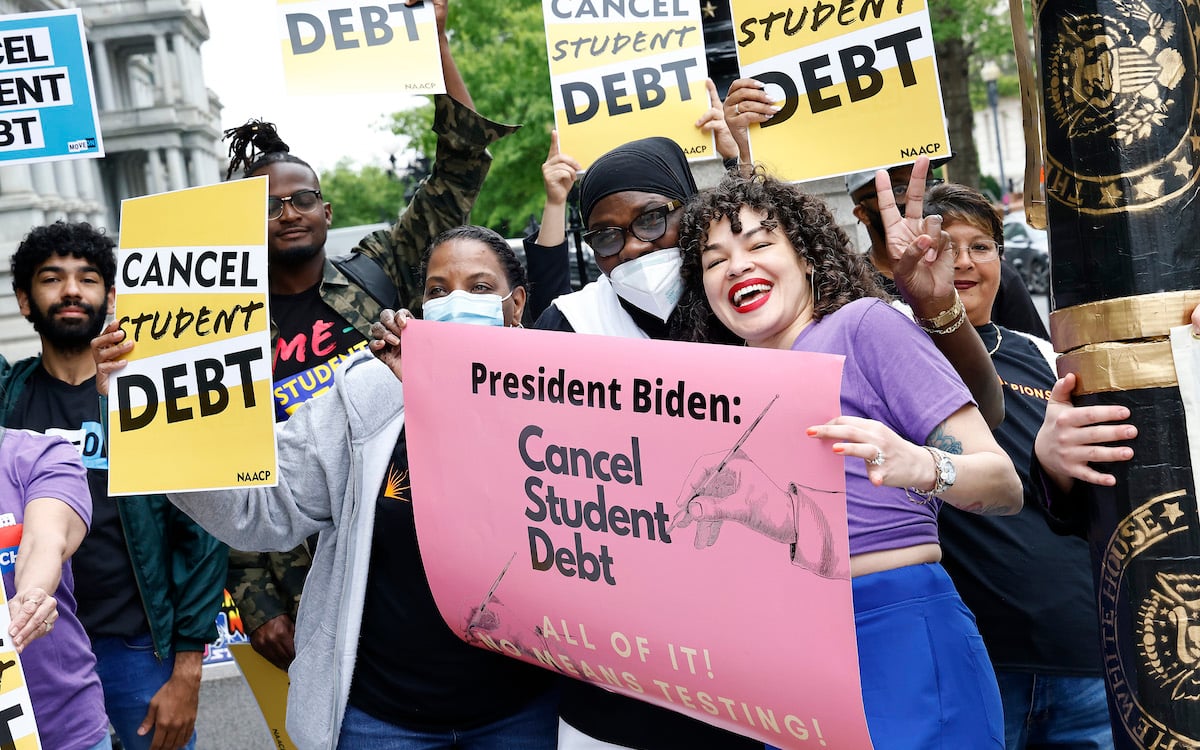The White House has approved another round of student debt relief and here’s hoping that this time it comes without major disappointments and confusion for borrowers.
Biden’s original 2020 campaign promise was to cancel up to $10,000 in loans per borrower for individuals making less than $125,000 and couples making under $250,000. Unfortunately, that was blocked by the courts and resulted in a huge legal circus. First, an Indiana attorney sued to stop Biden’s debt forgiveness, claiming harm done to him. Then the attorneys general of six Republican-controlled states—Nebraska, Missouri, Arkansas, Iowa, Kansas, and South Carolina—filed a lawsuit to prevent borrowers in their states from accessing debt relief.
This new debt cancellation is aimed at expanding the universe of borrowers getting the promised student debt relief. This new round of loan forgiveness will aid public service works. Teachers, nurses, and firefighters make up most of the 74,000 people who have had debt canceled in this last round of $5 billion in loan forgiveness.
In a statement announcing the plan, Biden said:
Today’s announcement comes on top of all we’ve been able to achieve for students and student loan borrowers in the past few years. This includes: achieving the largest increases in Pell Grants in over a decade to help families who earn less than roughly $60,000 a year; fixing the Public Service Loan Forgiveness program so that borrowers who go into public service get the debt relief they’re entitled to under the law; and creating the most generous Income-Driven Repayment plan in history – the SAVE plan. Borrowers can go to studentaid.gov to apply. And, in the wake of the Supreme Court’s decision on our student debt relief plan, we are continuing to pursue an alternative path to deliver student debt relief to as many borrowers as possible as quickly as possible.
Republicans are once again threatening to undermine Biden’s plan. Under a proposed GOP plan, it would be harder to access loan forgiveness and borrowers could end up staying in debt for an additional 20-plus years. The proposed legislation would repeal Biden’s student loan forgiveness regulations, make it difficult to implement new regulations moving forward, and also place a cap on the amount students can borrow—which, without a reduction in tuition and cost of living expenses, is simply another barrier low-income people to access higher education.
Student debt relief is almost certain to play an important role in this year’s presidential election as many are looking for Biden to follow through with his promise and are critical of the concessions and compromises. In 2023, there were 43.4 million Americans with student debt. The average debt amount is around $30,000 per borrower. An increasing number of young Americans are skipping college, citing the cost. In 39 countries around the globe, higher education is free or comes at a nominal cost. Could the U.S. ever be headed in that direction? It seems unlikely since an agreement can’t be reached by Democrats and Republicans on how best to deal with the giant portion of our nation saddled with student debt.
(featured image: Paul Morigi/Getty Images for We, The 45 Million)









Published: Jan 30, 2024 11:39 am